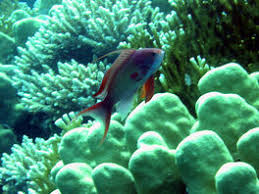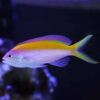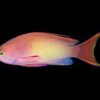The Symbolism of Dragons in Modern Literature

Dragons have long been a staple of mythology, folklore, and fantasy literature. These mythical creatures have been portrayed in various forms across cultures, symbolizing both fear and awe, power and destruction, wisdom and magic. However, in modern literature, the representation of dragons has evolved significantly. While they still embody some of their traditional traits, modern authors have reimagined dragons to reflect contemporary concerns, themes, and ideas. In this article, we will explore the symbolism of dragons in modern literature, examining how they are used to represent various concepts such as power, transformation, freedom, and the struggle between good and evil.
1. Dragons as Symbols of Power and Authority
One of the most prominent symbols associated with dragons is power. In many cultures, dragons are seen as creatures of immense strength, often controlling the elements or guarding treasures of great value. In modern literature, dragons continue to symbolize power, but their role and meaning have become more complex. Authors frequently use dragons as metaphors for authoritarian regimes, corporate greed, or the abuse of power.
In Game of Thrones, for instance, George R.R. Martin uses the dragons of Daenerys Targaryen as symbols of her rising power. As the Mother of Dragons, Daenerys commands a force of nature, and her dragons are not only weapons of mass destruction but also symbols of her legitimacy as a ruler. The dragons represent her potential for both destruction and creation, reflecting the duality of power. Their evolution throughout the series mirrors Daenerys’ own growth as a ruler, showcasing how power can shape and be shaped by those who wield it.
Similarly, in The Hobbit, J.R.R. Tolkien presents the dragon Smaug as a symbol of greed and the corrupting influence of power. Smaug hoards treasure beneath the Lonely Mountain, a metaphor for the dangerous and insatiable nature of greed. His role in the story highlights the destructive force that power can have when it is hoarded and misused.
2. Dragons as Metaphors for Transformation
Another recurring theme in modern literature is the dragon’s association with transformation. Dragons, particularly in fantasy genres, are often depicted as catalysts for change, whether in individuals or entire societies. Their presence can signify both internal and external transformation, acting as agents of growth, change, or even destruction.
In Eragon by Christopher Paolini, the dragon Saphira symbolizes personal growth and self-discovery. The bond between Eragon and Saphira represents the deep connection between the protagonist and his destiny. Through Saphira, Eragon undergoes significant transformations, not only in his physical abilities but also in his understanding of the world around him. The dragon becomes an embodiment of his inner strength and potential, urging him to embrace his role as a leader and warrior.
Similarly, in The Last Unicorn by Peter S. Beagle, dragons represent the passage of time and the inevitability of change. The dragon in this story, while not the main character, symbolizes the forces of nature and fate that push the narrative forward. The dragon’s interactions with the protagonist, the unicorn, reflect the idea that transformation is both a natural and necessary part of life.
3. Dragons as Emblems of Freedom and Rebellion
In modern literature, dragons can also be seen as symbols of freedom and rebellion, especially in works where the dragons fight against oppressive forces. These dragons often represent the spirit of independence and the desire to break free from societal constraints.
One notable example of this is in the Temeraire series by Naomi Novik. In these novels, dragons are sentient beings that fight alongside humans in an alternative version of the Napoleonic Wars. The dragon Temeraire, along with other dragons, acts as a force for change, challenging established norms and hierarchies. The dragons in Temeraire are not mere tools of war; they have their own desires, personalities, and capacity for rebellion. Their refusal to be subjugated mirrors the desire for freedom that permeates the narrative.
Similarly, in The Iron Dragon’s Daughter by Michael Swanwick, dragons are depicted as beings that resist oppression and the limitations placed upon them by society. The protagonist, Jane, forms a bond with the dragon, and together they defy the rigid structures of the world around them. The dragon in this story represents both the literal and metaphorical power of breaking free from societal expectations and embracing individual agency.
4. Dragons as Guardians of Wisdom and Knowledge
Dragons are often portrayed as wise, ancient creatures in modern literature, serving as guardians of knowledge and wisdom. These dragons are not merely destructive forces; they are keepers of secrets, teachers, and guides, offering wisdom to those who seek it.
In The Inheritance Cycle by Christopher Paolini, dragons are seen as wise beings who possess vast amounts of knowledge. The relationship between Eragon and Saphira is one of mutual respect and learning. Saphira, as a dragon, is not only a powerful creature but also a source of wisdom, guiding Eragon through his trials and helping him grow in understanding. The dragon’s wisdom extends beyond physical power, symbolizing the importance of knowledge, reflection, and the understanding of one’s place in the world.
In The Hobbit, the dragon Smaug is portrayed as an intelligent creature who guards the treasure in the Lonely Mountain. While Smaug is primarily depicted as a malevolent force, his vast intellect makes him a symbol of the value and dangers of knowledge. In the story, it is the characters’ knowledge of Smaug’s weaknesses that allows them to defeat him, further reinforcing the idea that wisdom can be both a source of power and vulnerability.
5. Dragons as Allegories of the Struggle Between Good and Evil
Perhaps the most enduring representation of dragons in modern literature is their role in the eternal struggle between good and evil. Dragons have often been depicted as evil creatures that must be slain by heroes, but modern literature has complicated this duality, presenting dragons as more nuanced and multifaceted beings.
In works such as His Majesty’s Dragon by Naomi Novik, dragons are not inherently evil. They are portrayed as allies in a larger struggle against tyranny and oppression. The relationship between humans and dragons in this series is complex, and the dragons are seen as both partners in battle and as individuals with their own agendas. This challenges the traditional binary of good versus evil, suggesting that the line between the two is often blurred.
In contrast, The Chronicles of Narnia by C.S. Lewis presents dragons as creatures that symbolize temptation and evil. The dragon in The Voyage of the Dawn Treader represents the darker side of human nature, particularly the temptation to succumb to greed and selfishness. The dragon, in this case, is a physical manifestation of these vices, illustrating the dangers of giving in to them.
6. The Enduring Appeal of Dragons in Modern Literature
The continued presence of dragons in modern literature is a testament to their enduring appeal. Dragons, with their multifaceted symbolism, provide authors with a powerful tool for exploring complex themes such as power, transformation, freedom, wisdom, and the struggle between good and evil. Whether they are depicted as fierce adversaries or noble allies, dragons in modern literature are more than just mythical creatures—they are symbols that reflect the human condition and our ongoing quest to understand the world around us.
As we have seen, the symbolism of dragons in modern literature is vast and varied. From representing the dangers of unchecked power to symbolizing the possibility of transformation and freedom, dragons continue to capture the imagination of readers and writers alike. Their presence in contemporary works reflects the timeless nature of the dragon as a symbol of both mystery and meaning, a creature that can embody the best and worst of humanity in equal measure. As long as dragons continue to appear in literature, they will remain a powerful symbol of the complexities of the human experience.

